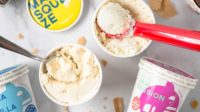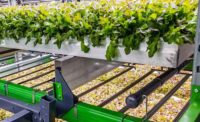Each of these colds foods companies are using new approaches to reach changing consumer palettes with unique approaches to sustainability and product development.
In their own words, these evolving processors share a little bit about their story and offer insights into where the cold foods industry is heading.
(These interviews have been edited for brevity and clarity).
Cleveland Kitchen
Mac Anderson, Chief Commercial Officer
How did Cleveland Kitchen get started and what inspired its founding?
We started selling our sauerkraut line, Cleveland Kraut, at local farmers markets in 2014. We grew up working at these very same markets, our mother (a chef and biologist) founded a non-profit when we were kids in order to bring fresh, farm-raised goods into the city of Cleveland, and we grew up with a great respect for farmers and food producers. We turned a passion for local, Cleveland comfort food into a recipe for delicious, fresh and crunchy sauerkraut and took it to market as a side hustle from our day jobs in banking (Drew Anderson), finance (me), and architecture (Luke Visnic). After a year of long weeknights spent fermenting (after our respective jobs) and selling out at markets on the weekends, we knew we had a product that was positioned to win as a fresh, crunchy, fermented vegetable and potential category changer. We quit our jobs and launched into retail with local grocers (Heinen's, Marc's, Giant Eagle). Today we are the category leader in sauerkraut and kimchi, and the growth driver for the category in over 17,000 doors nationally.
What makes Cleveland Kitchen different from its competitors?
A focus on crunch and chef-inspired flavor with our natural ferments. We are a delicious daily eat for consumers and have truly elevated the humble dish of fermented cabbage to new and exciting usage occasions.
How are Cleveland Kitchen’s products manufactured and distributed?
We process fresh cabbage and other vegetables for live fermentation fresh from the fields in our facilities in Cleveland, Ohio, and Santa Rosa, California, and ship via cold chain nationally.
What are some of Cleveland Kitchen’s sustainability goals?
We have been successful in reducing carbon impact and supporting great family farms with fantastic processes. We buy local packaging, vegetables and materials whenever possible, and take great pride in impacting our communities positively.
What was Cleveland Kitchen’s best-selling product in 2022?
Classic Kimchi
What else would you like R&FF readers to know about Cleveland Kitchen in the coming year?
The leading platform in fresh fermented has new and exciting flavors and formats coming in our delicious pickles, Krauts, and Kimchi that will be available in most major retailers!
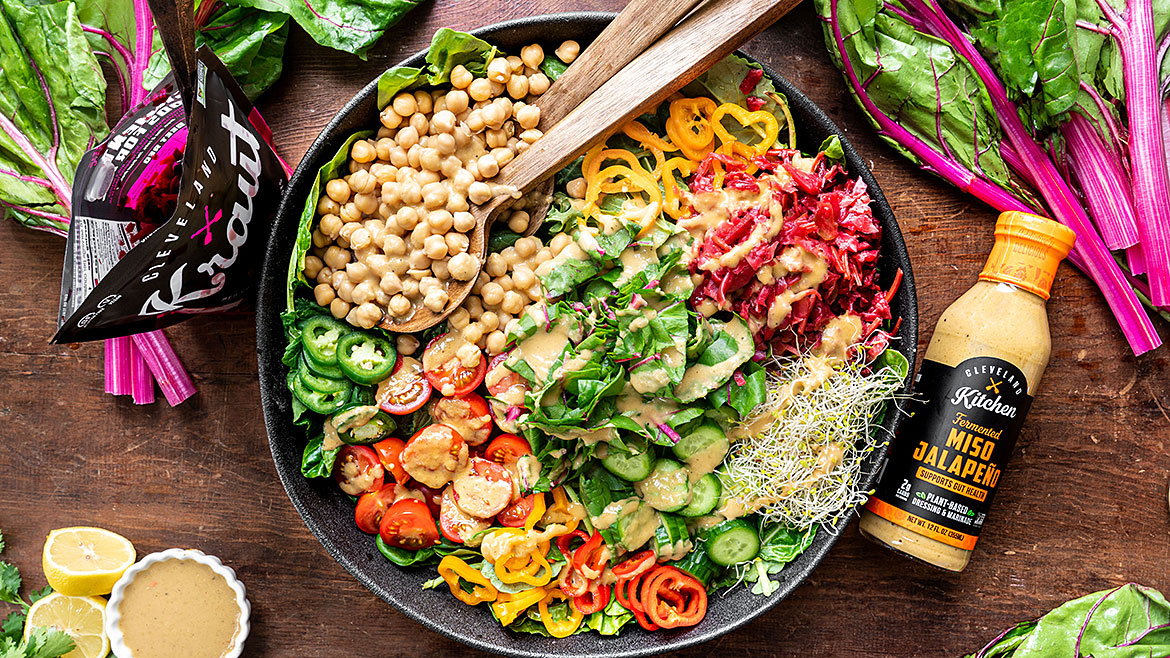 Cleveland Kitchen's sauerkraut and kimchi products are found in over 17,000 stores nationwide.Courtesy Cleveland Kitchen.
Cleveland Kitchen's sauerkraut and kimchi products are found in over 17,000 stores nationwide.Courtesy Cleveland Kitchen.
Do Good Foods
Justin Kamine, Co-CEO
How did Do Good Foods get started and what inspired its founding?
My brother Matthew and I founded Do Good Foods in 2020, to try to create a way to address the enormous challenges of food waste and climate change, something we care deeply about. Once we learned about the extent of food waste and its effect on our planet, we knew we had to do something to help solve it – now; there is no time to wait! Our background as an entrepreneurial family with a 40-year heritage of solving macro environmental problems through building large infrastructure solutions gave us a unique platform to look at this problem differently; we believed we could create a sustainable, scalable solution to fighting food waste and bringing sustainability to scale across the U.S. That’s when we founded Do Good Foods.
The reality is that we throw away approximately 40% of the food we grow. If food waste was a country it would be the third largest greenhouse gas emitter. Our solution was to pioneer a closed loop system that upcycles nutritious surplus grocery food (after community donations are made) into nutritious feed for animals which, based upon the Environmental Protection Agency’s Food Hierarchy, is the next best usage of food. When we use this food to grow our chickens, we create a sustainable alternative for consumers that helps use our food system to solve environmental problems.
In April 2022, we launched our first consumer product, Do Good Chicken. Real chicken with real impact. Each Do Good Chicken saves approximately four pounds of surplus food from being thrown away, preventing the release of approximately three pounds of greenhouse gases (CO2e). As of the end of September 2022, Do Good Chicken has already saved 12 million pounds of surplus grocery food from landfills, preventing 1,300 metric tons of greenhouse gases (CO2e) from entering the atmosphere.
What makes Do Good Foods different from its competitors?
Do Good Foods’ first product, Do Good Chicken, is the first verified carbon-reduced chicken and the first verified chicken brand actively combating climate change. We created Do Good Chicken to provide consumers with a simple, inexpensive and impactful solution to fighting food waste simply by purchasing a product that they would normally pick up on their weekly trip to the grocery store. We believe that this is a powerful mission that empowers consumers to fight food waste and combat climate change by simply enjoying a delicious piece of chicken that’s priced below organic.
Do Good Chicken is not only good for the planet, but also, the plate, as it is 100% natural (minimally processed, no artificial ingredients), hatched, raised and harvested in the U.S., made with no artificial ingredients, antibiotics, hormones or steroids and cage-free. Additionally, our packaging trays are made from rPET (recycled PET containers) and 100% recyclable, providing consumers with another reason to feel great about every purchase and every bite.
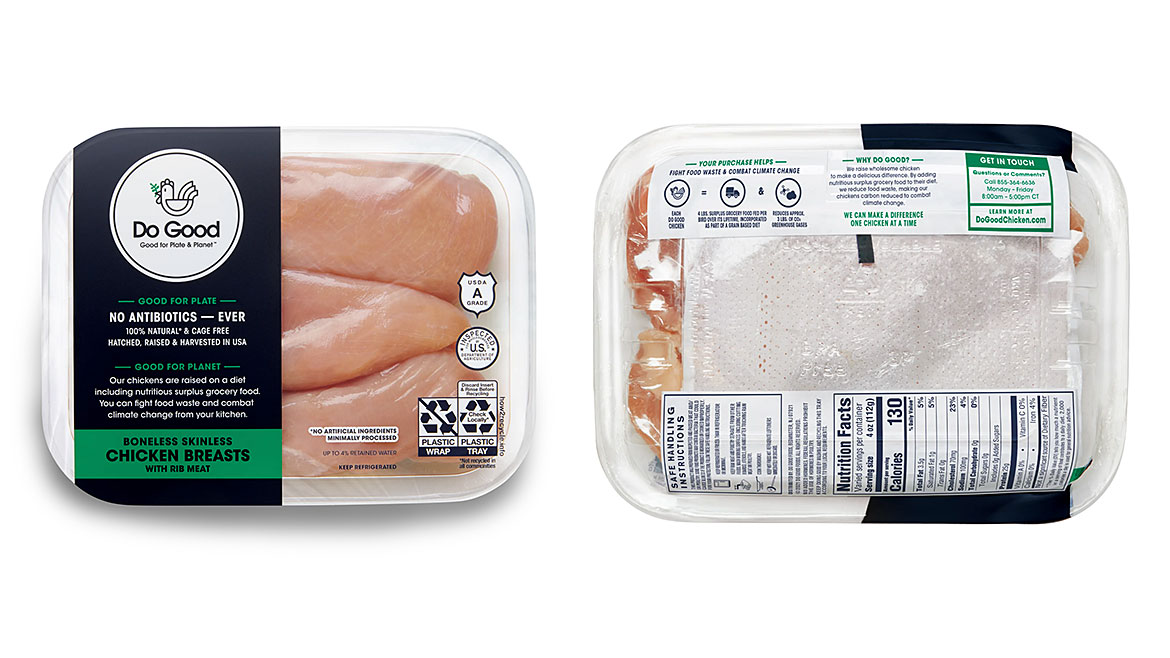 Since launching in April, Do Good Chicken has grown its distribution channels and is now available throughout the Northeast and Mid-Atlantic regions.Courtesy Do Good Foods.
Since launching in April, Do Good Chicken has grown its distribution channels and is now available throughout the Northeast and Mid-Atlantic regions.Courtesy Do Good Foods.
How are Do Good Foods products manufactured and distributed?
To be clear, we are not chicken farmers, but rather the bookends of a solution to fighting food waste. At one end, we start by gathering and sorting surplus grocery food and through a proprietary process, repurpose it into healthy feed for chickens. On the other end, we process, market and sell the chickens to retailers & foodservice providers, while educating consumers about the power of upcycled foods. What we’ve created is a closed-loop system that uses food to its maximum benefit.
Right now we collect surplus groceries from about 450 retailers within a 250-mile radius of our first production facility in Fairless Hills, Pennsylvania. The facility is capable of processing 60,000 tons every year by taking in 160 tons of surplus food every day. With demand continuing to increase, we plan to expand operations with two more processing facilities currently being built in Fort Wayne, Indiana, and Selma, North Carolina.
Since our launch in April, Do Good Chicken has rapidly grown distribution and is now available throughout the Northeast to Mid-Atlantic at Albertsons Companies banners, The Giant Company as well as major markets like Dallas and Denver via Target in over 458 stores. We are also distributed to corporate cafés, healthcare systems and event venues through Compass Group, the world’s largest food and support services company.
What are some of Do Good Foods sustainability goals?
Ultimately, our goal is to eliminate food waste. We also know that we can help the animal protein industry reduce its impact on the environment and subsequently we have plans to expand to other product offerings in the future. I personally believe that upcycling is the food system of the future, so we also hope that our products can educate consumers about the power of upcycled foods, which can help feed a growing population without increasing additional strain on the environment or contributing to climate change.
What was Do Good Foods best-selling product in 2022?
Right now we’re focused on growing Do Good Chicken, and our best-selling SKU of Do Good Chicken is our Boneless Skinless Chicken Breast.
What else would you like R&FF readers to know about Do Good Foods in the coming year?
While Do Good Chicken is still a small fraction of the market, with eight billion chickens consumed in the U.S. annually, the opportunity for the brand to make an impact on reducing food waste from grocery stores is significant. In fact, if just one in five chickens was a Do Good Chicken we could solve grocery store food waste in five years.
We are laser-focused on growing our business and that includes plans to expand our operations, with two additional processing facilities scheduled to open within the next two years. These new facilities will enable us to increase the scale of surplus food collection, furthering our mission to fight food waste and combat climate change. Supported by this facility expansion, we also plan to continue to build and grow our retailer and foodservice partnerships.
SunOpta
Mike Buick, Senior Vice President & General Manager
How did SunOpta get started and what inspired its founding?
SunOpta is a U.S.-based, global pioneer fueling the future of sustainable, plant-based and fruit-based food and beverages. Every day, SunOpta’s 1,350 employees in 14 locations in three countries rise with the sun to continue their journey “Fueling the Future of Food.”
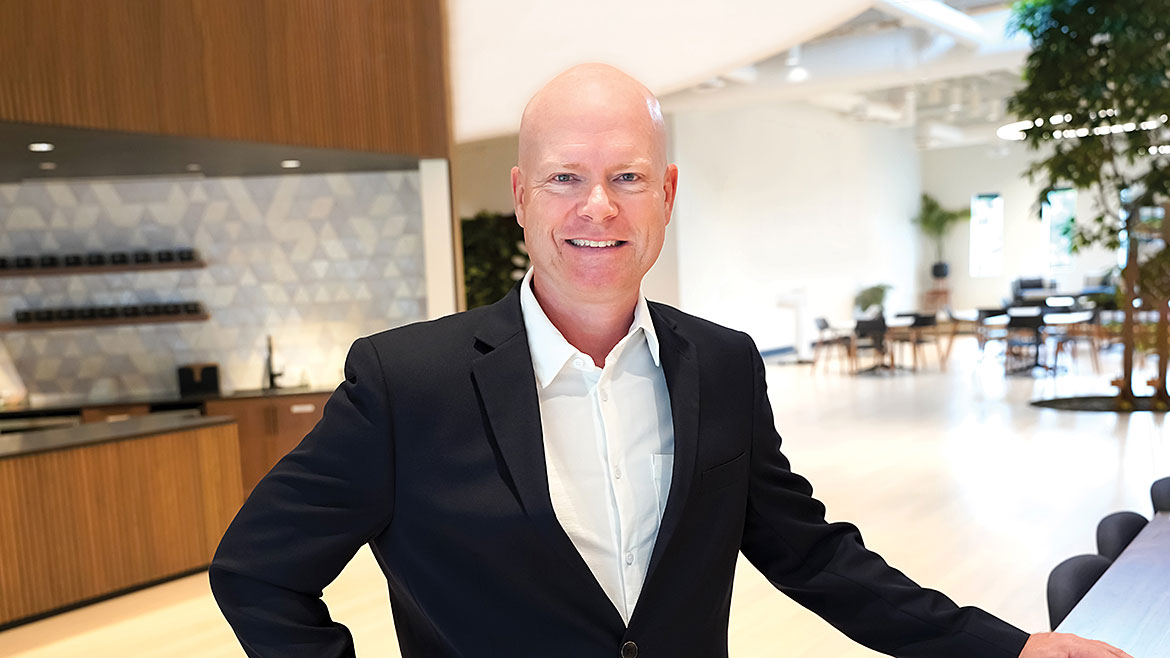 Mike Buick
Mike Buick
SunOpta has been a relentless innovator for 45 years, owning and managing over 50 businesses to enhance sustainability. For decades, SunOpta has collaborated with the most planet-friendly brands, including the largest coffeehouse chain in the world. SunOpta positively impacts people and the planet, specializing in sourcing, processing, and producing organic, non-GMO plant-based and specialty products. Specifically, SunOpta produces more than 300 organic products and 44 Non-GMO Project products. During the past 24 months, SunOpta has commercialized 109 new items.
SunOpta’s business is composed of two healthy food and beverage platforms: plant-based and fruit-based. SunOpta products include ingredients, bases and alternatives to dairy beverages, and frozen fruits, teas, and fruit-, grain-, and seed-based snacks. Anchored by its 28-person R&D team, SunOpta is a prolific producer of plant-based products, and produces nearly seven out of 10 of the brands of plant-based milks on the shelf.
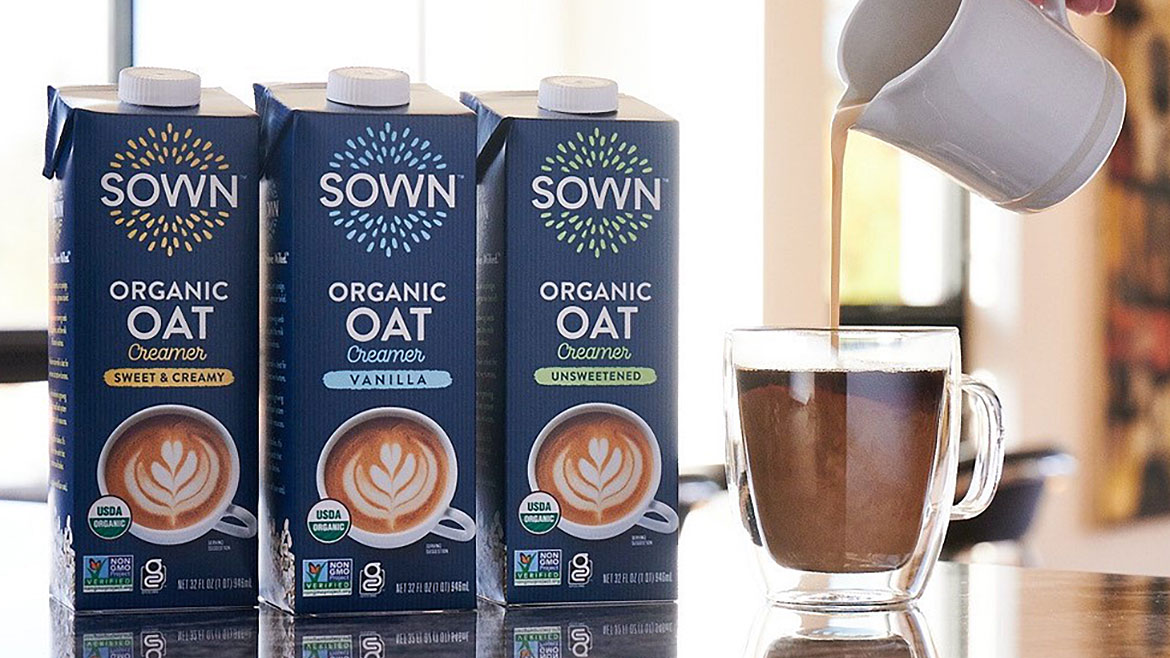 SOWN was one of the first organic oatmilk products in the U.S. Courtesy SunOpta.
SOWN was one of the first organic oatmilk products in the U.S. Courtesy SunOpta.
What makes SunOpta different from its competitors?
SunOpta nimbly navigates supply and demand to bring products to market through a wide range of channels including co-manufacturing, producing ingredients and private label, and creating SunOpta’s own brands such as, SOWN, Dream, West Life and Sunrise Growers.
SunOpta is a pioneer and leader in oatmilk, a major area of focus. SunOpta produces and packages oatmilk for some of the largest companies in the industry, demonstrating how the company excels at vertical integration. While many of the products SunOpta manufactures are kept cool or cold in the refrigerator and freezer, SunOpta is the largest supplier of shelf stable milks in North America and the only national aseptic manufacturing network in the U.S.
How are SunOpta’s products manufactured and distributed?
With its far-reaching, regional production strategy, SunOpta operates 12 manufacturing facilities around the world. To continue growth and increase capacity, SunOpta broke ground on a dirt field in September 2021, to build its biggest investment in company history, a 285,000-square-foot facility in Midlothian, Texas. The Texas facility completes a diamond of SunOpta facilities in the U.S, which creates access and efficiencies, such as eliminating an estimated 15 million freight miles annually in the supply chain.
The company also recently completed expansion projects at its Modesto, California; Alexandria, Minnesota; and Allentown, Pennsylvania plant-based production facilities, including a $26 million investment in oatbase processing.
What are some of SunOpta’s sustainability goals?
Sustainability is embedded in SunOpta’s DNA. Environmental achievements include not only planet-friendly products, but also carbon emission savings, recyclable packaging, upcycling food waste, water conservation and zero-waste manufacturing. Specific examples include:
- In 2021, the plant-based milks SunOpta produced equated to an estimated savings of 32 billion gallons of water, compared to dairy milk.
- In 2021, 97.7% of all packaging by weight sourced by SunOpta was recyclable.
- SunOpta saved 261.25 tons of carbon emissions by optimizing transportation in 2021, and improved energy efficiency by 6% over its 2019 baseline.
- SunOpta is targeting an achievement of zero landfill waste at its nine manufacturing facilities by the end of 2022. It has already achieved this milestone at its Allentown, Pennsylvania plant and two of its production facilities in Alexandria, Minnesota.
- By 2027, SunOpta will reduce its usage of electricity by 40%, natural gas by 30% and water by 25%.
SunOpta is proud to call Eden Prairie, Minnesota home. In April 2022, SunOpta opened its new $20 million, 65,000 square-foot corporate headquarters and eco-powered innovation center. The new location features a pilot plant and R&D center eight times the size of its previous location. SunOpta’s HQ utilizes 13,000 square feet of renewable bamboo flooring, 920 LED light fixtures and four electric vehicle charging stations; solar panels will offset more than 30% of electricity once operational.
What was SunOpta’s best-selling product in 2022?
SunOpta is a pioneer and leader in oatmilk, a major area of focus representing more than 30% of its plant-based milk business. SunOpta produces and packages oatmilk for some of the largest and planet-friendly companies in the industry, including the largest coffeehouse chain in the world. Oatmilk is the second most popular plant-based beverage on the market, projected to reach $2.2 billion by 2026, with a compound annual growth rate (CAGR) of 6.2% according to Market Research Future. Together with its customer partners and including its own branded products, SunOpta’s $100M+ oat business highlights the benefits of vertical integration with oatmilk as a 2022 product standout.
When a SunOpta innovation especially addresses a need in the marketplace, the company often chooses to nimbly launch the product as its own. Such is the case with SOWN, one of the first organic oat coffee creamers on the market launched as SunOpta’s own brand, a delicious, refrigerated innovation. SOWN Organic Oat Creamers are smooth, creamy and perfect as a delicious dairy alternative for coffee drinkers. Custom-crafted from SunOpta’s own proprietary recipe using organic oats sourced from North American growers, they come in three flavors: Vanilla, Unsweetened and Sweet & Creamy and are USDA Certified Organic and Non-GMO Project Verified.
The popularity of oats is soaring in plant-based dairy alternative categories and will continue to grow as new products come to market and people become increasingly interested in sustainable beverage options. We’re proud of the fact that SOWN is one of the first organic oatmilk products in the U.S. SunOpta offers consumers organic, plant-based creamer alternatives without asking them to compromise on taste or values.
What else would you like R&FF readers to know about SunOpta in the coming year?
In April 2021, SunOpta acquired pioneering brands Dream and Westsoy to boost its innovation pipeline and add to its owned product portfolio. Exciting new products are in the works.
The Dream and Westsoy brands were pioneers that brought incredible growth to the plant-based movement in the 1990s. It was time to accelerate innovation with new products in the category, for which these trailblazers were originally known, and reinvigorate and reposition these brands–now Dream and West Life–for today’s consumer.
Readers should also keep their eye on SunOpta’s fruit-based business, including value-added blends, on-trend and nutrient-dense product lines such as smoothie bowls, and dynamic growth overall in the better-for-you fruit snacks category.


